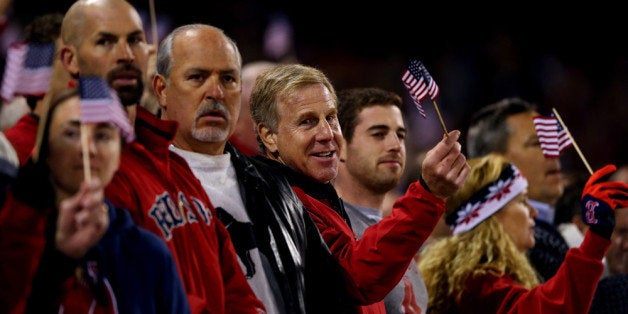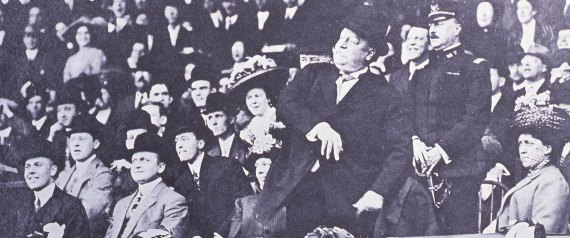
There are several competing theories as to why, in the middle of the seventh inning, every baseball game comes to a stop so everyone can stretch, sing a really old song and take a breather. But for more than a century, the seventh inning stretch has been one of baseball's most cherished moments, exemplifying the humor, sportsmanship and love of tradition that make the sport unique.
Here are five reasons why baseball wouldn't be the same without this random, joyful moment.
THE MUSIC
Aside from the national anthem at the beginning of most sporting events, no piece of music is so deeply associated with a specific moment in sports. It was written by Jack Norworth, who had a successful career in show business starring on Broadway in the early 1900s before also appearing in several sound films.
THE MYSTERIOUS ORIGINS
The origins of the seventh inning stretch are lost to the shadows of history. One popular story dates back to the days of President William Howard Taft, who was attending a game in 1910 and stood up during the middle of the seventh inning to stretch his legs. Naturally (the story goes) when all of the other fans in attendance saw Taft stand, they followed suit.
Another theory about the tradition's origins cites an 1869 issue of the New York Herald, which documented a game in which the entire crowd simply stood up after a brutally long second inning of play, thus inventing "the stretch" (albeit a bit earlier in the game). Other competing accounts are out there, but no conclusive proof.

President William Howard Taft throws out the first ball to open a baseball season in history in Washington in April of 1910. (Photo by Mark Rucker/Transcendental Graphics, Getty Images)
THE CAMARADERIE
Dave Ferguson, a baseball enthusiast and the radio host of "Beyond the Cheers," believes that no matter which origin story you prefer, the seventh inning stretch remains as integral to the game as anything.
"It's actually taken on its own life, depending on the team," Ferguson told HuffPost. "The players look at it as a break from the game itself. And it's appreciated by the fans."

THE TRADITION
"The seventh inning stretch is another tie to our history," Tony La Russa, the three-time World Series-winning manager, told The Huffington Post. La Russa believes that the stretch helps to remind players and fans of the game's roots, which is especially valuable even as other things change, such as the structure of the playoffs or the addition of instant replay.
THE RELIEF
Baseball is physically and mentally grueling. The lack of a game clock, the open-ended nature of every game, its division into turn-based innings rather than periods or quarters -- all these elements contribute to baseball's unique flow. The 162 games of the regular season are played over about 185 days, plus the seven weeks of spring training and the playoffs. During the season, players work daily on their physical conditioning in the weight room, batting cage or bullpen, and they are constantly reviewing video for tendencies.
Ichiro Suzuki, the New York Yankees outfielder and future Hall of Famer, told The Huffington Post a few weeks ago that he took a mere three days off after his 13th season before resuming hitting duties.
And the games themselves may be getting longer, making the seventh inning stretch even more of necessity for players. According to MLB.com, the average time for a nine-inning game in the 1970s was around two hours and 30 minutes. During the 2000s however, that time had increased by a full 20 minutes. This past season, the average game time tied the all-time high of two hours, 58 minutes. And during those nearly three hours, actual baseball happens for only 18 minutes -- including balls in play and wild pitches -- according to a study by The Wall Street Journal.
Relive The Longest Game In Baseball History:
Email me at jordan.schultz@huffingtonpost.com or ask me questions about anything sports-related at @Schultz_Report. Also, be sure and catch my NBC Sports Radio show, Kup and Schultz, which airs Sunday mornings from 9-12 ET, right here.
